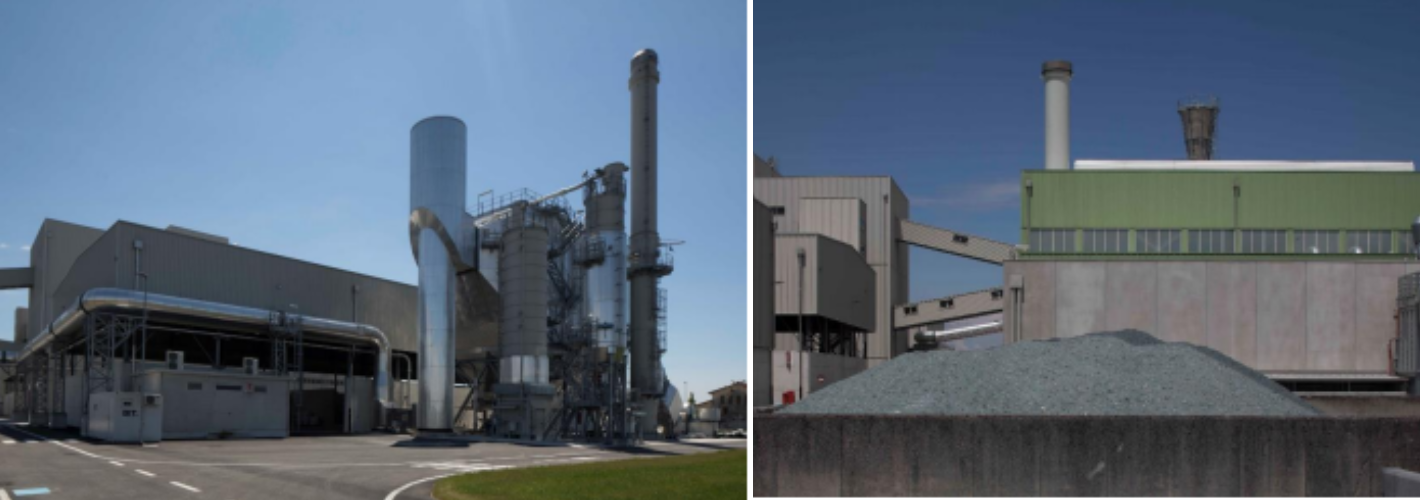Friday, September 26, 2025
Zignago Power: a local biomass plant serving sustainable energy and the community

Zignago Vetro, thanks to Zignago Power – the Group’s biomass power plant – uses locally produced renewable energy to power its facilities and supply electricity to the surrounding community.
The initiative reduces CO₂ emissions, makes use of agricultural and forestry waste, and promotes a circular and sustainable economy.
A concrete example of integration between industry and the local territory for the benefit of the environment and the community.
The initiative reduces CO₂ emissions, makes use of agricultural and forestry waste, and promotes a circular and sustainable economy.
A concrete example of integration between industry and the local territory for the benefit of the environment and the community.
PROJECT OBJECTIVE
The initiative was launched with the goal of reducing environmental impact by promoting energy self-sufficiency through locally sourced renewable energy.
With the development of Zignago Power, the Group’s biomass power plant, the decision was made to harness local resources (agricultural and forestry waste) to produce clean energy for both the company’s facilities and the surrounding community.
With the development of Zignago Power, the Group’s biomass power plant, the decision was made to harness local resources (agricultural and forestry waste) to produce clean energy for both the company’s facilities and the surrounding community.
This project strengthens the commitment to decarbonization and the circular economy.
The aim is to meet the entire electricity demand of Zignago Vetro with renewable energy, significantly reducing CO₂ emissions and contributing to the region’s energy transition.
The aim is to meet the entire electricity demand of Zignago Vetro with renewable energy, significantly reducing CO₂ emissions and contributing to the region’s energy transition.
CONTRIBUTION TO A LOW ENVIRONMENTAL IMPACT
The power plant consistently produces 170 GWh of gross electricity per year (155 GWh net), with a stable and regular output throughout the day and across the months of the year.
In addition to supplying energy to Zignago Group companies, the plant powers a district heating network serving public facilities (school, kindergarten, gymnasium) as well as private users (church, homes, offices).
This district heating system reduces the municipality’s final energy consumption by 10% and provides users with stable economic savings.
PROJECT INITIATION
The project was initiated through collaboration between energy engineers, environmental experts, and local partners from the agricultural and forestry sectors.
After an energy and environmental feasibility study, it moved on to the design and construction of the Zignago Power plant.
Main phases:
- analysis of the territory and available biomass,
- plant design,
- permitting process,
- construction and operational start-up.
Constraints encountered:
- stability of biomass supply,
- integration with the local power grid.
Solutions implemented:
- supply chain agreements with local producers,
- dedicated technical solutions.
PROJECT IMPLEMENTATION
The project was developed in several stages:
- preliminary analysis of local biomass availability and assessment of technical feasibility,
- plant design with a focus on efficiency and environmental compatibility,
- authorization process with local and regional authorities,
- construction and testing of the Zignago Power plant,
- operational integration with Zignago Vetro plants and the local grid.
Main difficulties:
- ensuring continuity and sustainability of biomass supply → overcome with supply chain agreements with local producers,
- complexity of permitting procedures → addressed through constant dialogue with institutions,
- optimizing energy efficiency and compatibility with industrial needs → solved through flexible plant design and advanced technologies.
INVOLVEMENT OF THE COMPANY AND EMPLOYEES
Stakeholders, including local communities, biomass suppliers, public agencies, and grid operators, were actively involved through meetings, collaborative agreements, and consultations.
This participatory approach fostered social acceptance of the project, ensuring transparency, shared benefits, and sustainable land development.
RESULTS
In 2024, about 78,444 MWh of electricity consumed at the Zignago Vetro glass factory in Fossalta di Portogruaro was supplied directly from the Zignago Power biomass plant.
Emissions avoided through this renewable source amounted to 39,266 tCO₂eq Scope 2 (MB).
Emissions avoided through this renewable source amounted to 39,266 tCO₂eq Scope 2 (MB).
The power plant stably produces 170 GWh of gross electricity per year (155 GWh net), with a constant and regular profile both daily and across different months of the year.
In addition to the Zignago Group companies, the plant feeds a district heating network for public users (school, kindergarten, gymnasium) and private users (church, homes, offices).
This district heating reduces the municipality’s final energy consumption by 10% and ensures stable savings for users.
Furthermore, the recovery of agricultural and forestry waste promotes the circular economy and supports local employment through supply chain agreements.
